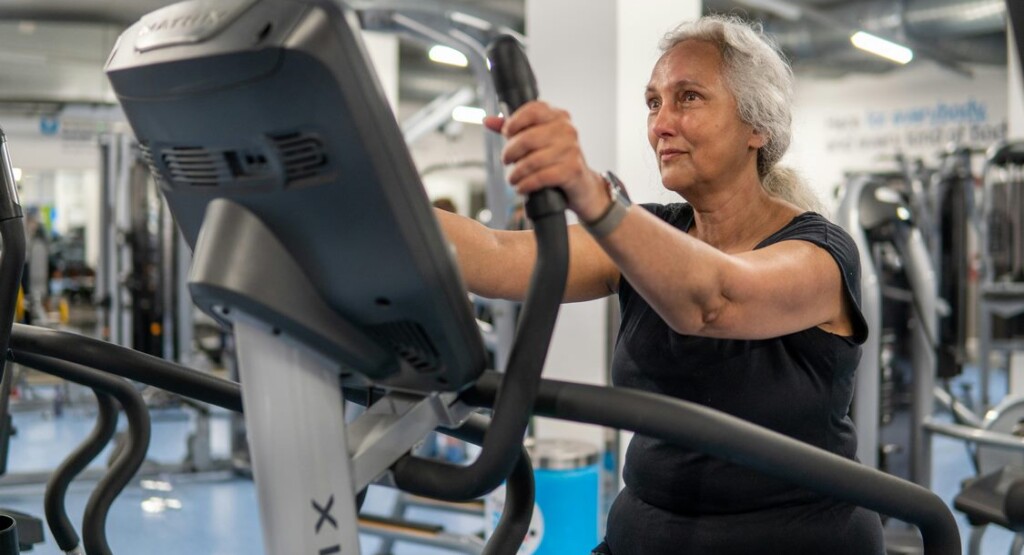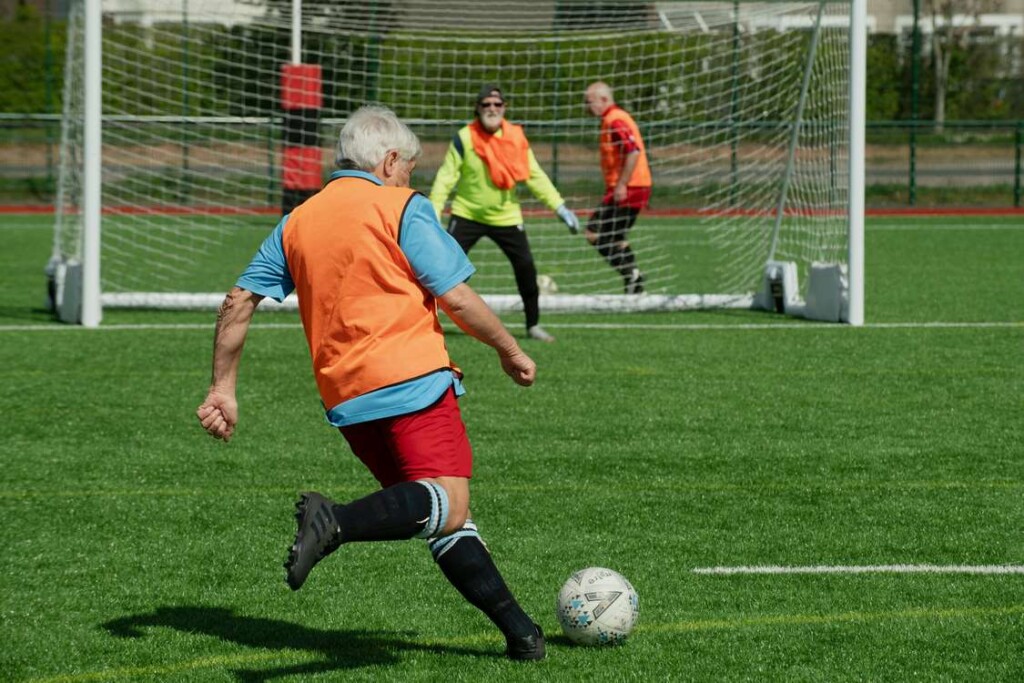 Eliptical machines were sometimes used for the interval training to avoid excess load on the joints – credit, Center for Better Aging
Eliptical machines were sometimes used for the interval training to avoid excess load on the joints – credit, Center for Better AgingExercise was in the news recently for being found in an epidemiological study to reduce the risk of colon cancer.
But what should be in the news is that a study published 7 years ago is going somewhat viral on the internet thanks to the profile of a popular health influencer, Dr. Rhonda Patrick.
The study found middle-aged adults could reverse 20 years of age-related decline in their heart muscles through a 2 year exercise program, and that it effectively turned sedentary 55-year-olds into 30-year-olds when viewed through heart activity monitoring equipment.
Being that heart disease is the leading cause of death for most people in the United States, and cardiac strength is inversely correlated with heart disease, it’s probably one of the most significant studies on exercise ever carried out.
To wit, the authors describe their trial, which took 61 people and put them on an exercise regimen for 2 years, as the longest, randomized controlled trial documenting the physiological effects of supervised, structured exercise on cardiovascular health ever performed.
The results were mentioned above: 2 years of work created a heart capable of working as hard as a 30-year-old’s, as if 20 years of aging had been reversed.
 – credit Jon Matthews
– credit Jon MatthewsThe training program started light and gradually grew in intensity and duration, with months 6-10 representing peak output. The second year was characterized by a “maintenance period” of moderate intensity.
ALSO CHECK OUT: This Rarely-Trained Muscle Is Recognized Worldwide as a Marker of Human Health–And the Test for Living to 100
Broken down, it involved specifically two interval training sessions per week, along with one hour of “base pace,” which focused on a fun activity like low to moderate-intensity sports, cycling, or hiking. At peak training load, participants were training 5–6 hours per week, while during the maintenance period of the latter 14 months, that was dropped to about 4 hours, and included the removal of one of the two interval training sessions.
It bears mentioning that even the lower intensity maintenance phase involved more training than typical government prescriptions of two-and-a-half hours. But as study author Benjamin Levine said on Dr. Patrick’s show, exercise should be thought of as personal hygiene—to be done with the same routine urgency as brushing one’s teeth or showering.
 1 hour of base pace was included in the program, and typically involved recreational exercise like sports – credit Age Cymru
1 hour of base pace was included in the program, and typically involved recreational exercise like sports – credit Age CymruA key point the authors made is that a measurement of fitness in middle age is the strongest predictor of future heart failure, and men and women of middle age who have had a lifetime of exercise behind them enjoy heart health closer to that of a 30 year old. But their study showed this could still be achieved in middle age even without a lifetime of exercise—in fact, just 2 years were required.
EXERCISE IS MEDICINE: High Levels of Physical Fitness Linked to Lower Dementia Risk in Those with Genetic Predisposition
The study also points out, however, that there are limits to exercise’s abilities of age reversal and the heart’s capacity to forgive a lifetime of sedentary behavior. If moderate-intensity training programs are started age 65 or later, they do not appear to be able to overcome the damage—specifically the heart stiffening and shrinkage—from past sedentary periods.
This suggests for physicians and clinicians that middle-aged hearts retain some degree of cardiac plasticity, and may represent a more optimal time—or quite simply the last time—to intervene with aggressive lifestyle modification aimed at improving cardiac health.
WATCH the video below to hear what the training program was…
If Your Friends Are Thinking Of Starting To Exercise, SHARE This STORY NOW…
Source link

